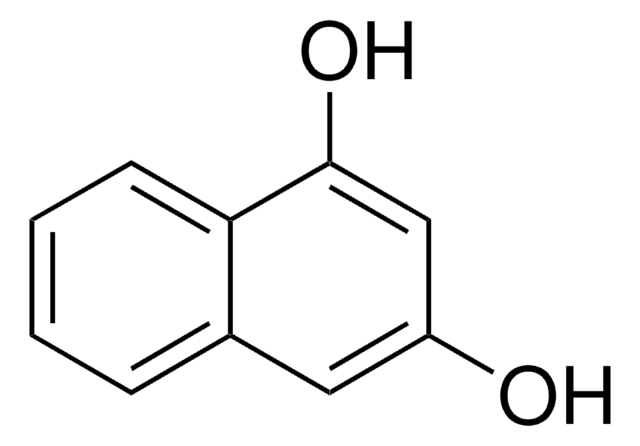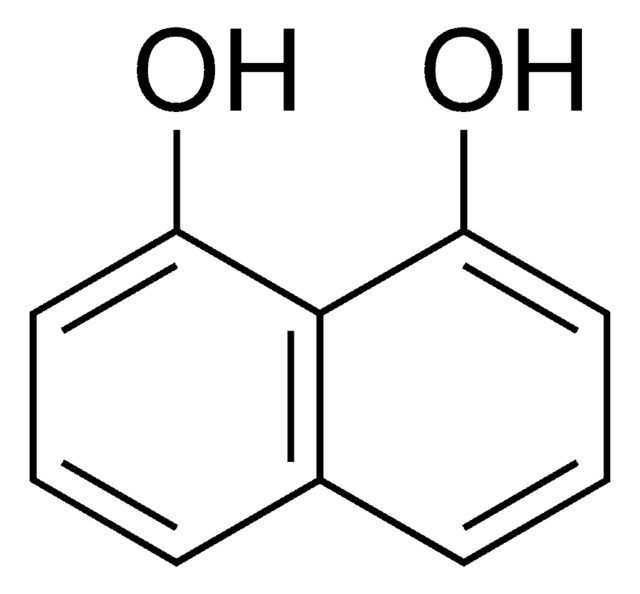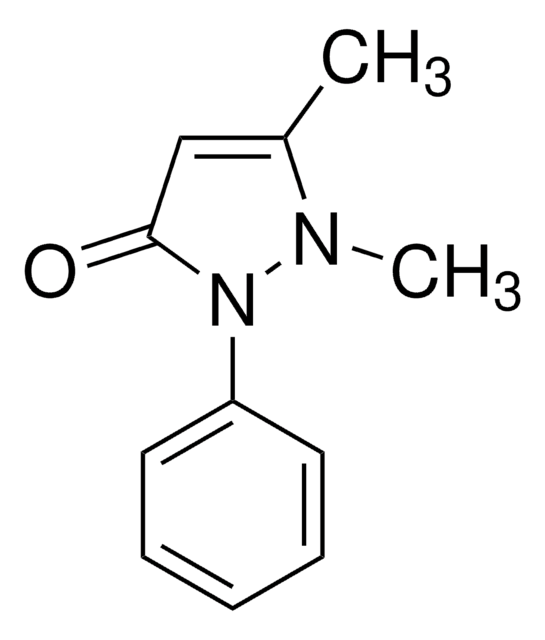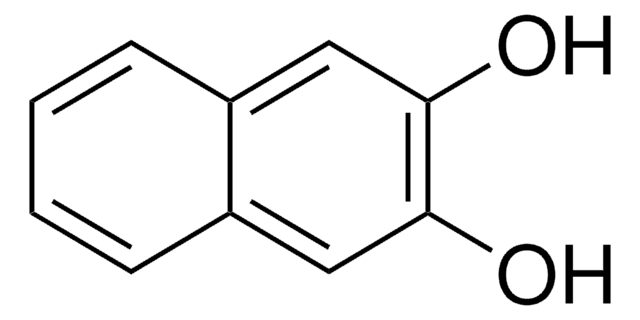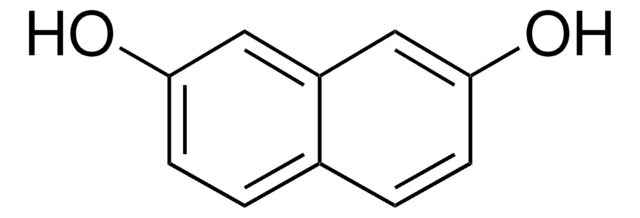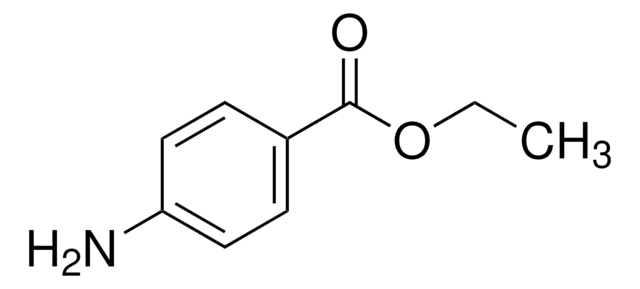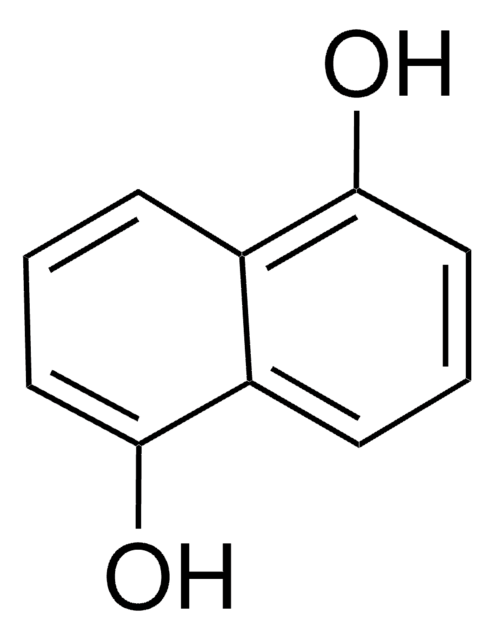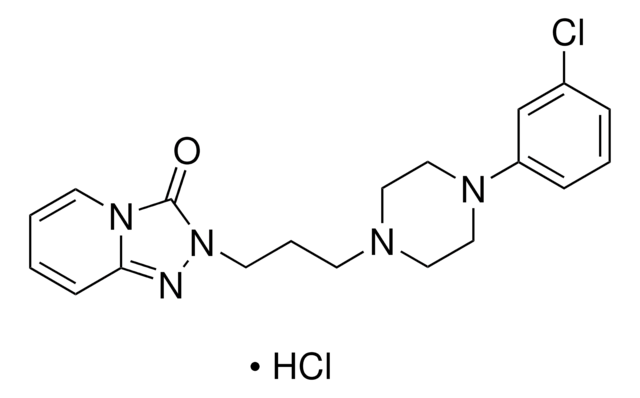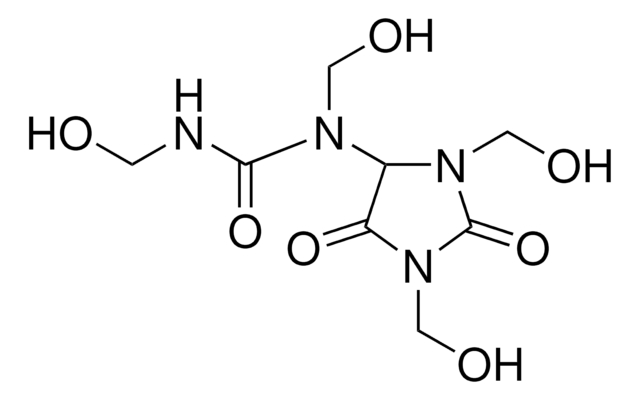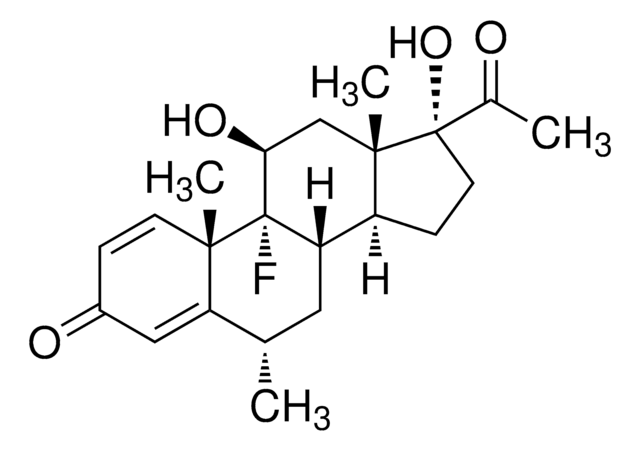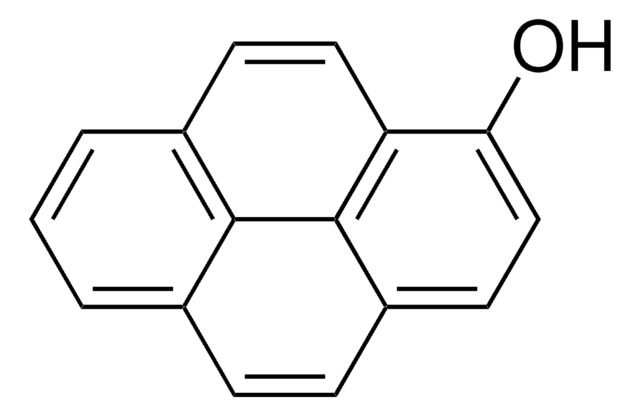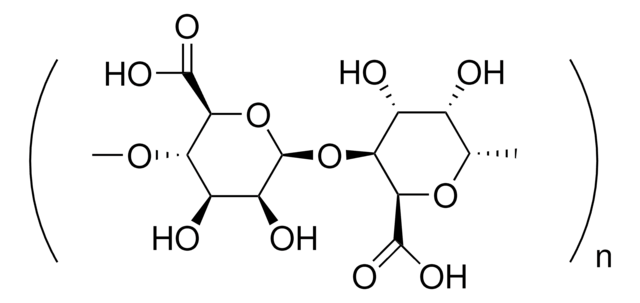N6250
1,3-Dihydroxynaphthalene
≥99% purity , crystalline
Synonym(s):
1,3-Naphthalenediol, Naphthoresorcinol
About This Item
Recommended Products
product name
1,3-Dihydroxynaphthalene, ≥99%, crystalline
Quality Level
Assay
≥99%
form
crystalline
technique(s)
titration: suitable
color
white to tan
mp
123-125 °C (lit.)
124-125 °C
solubility
ethanol: 50 mg/mL
λmax
288 nm (298 nm (ethanol))
application(s)
diagnostic assay manufacturing
hematology
histology
storage temp.
room temp
SMILES string
Oc1cc(O)c2ccccc2c1
InChI
1S/C10H8O2/c11-8-5-7-3-1-2-4-9(7)10(12)6-8/h1-6,11-12H
InChI key
XOOMNEFVDUTJPP-UHFFFAOYSA-N
Looking for similar products? Visit Product Comparison Guide
General description
Application
Preparation Note
Signal Word
Warning
Hazard Statements
Precautionary Statements
Hazard Classifications
Muta. 2
Storage Class Code
11 - Combustible Solids
WGK
WGK 3
Flash Point(F)
Not applicable
Flash Point(C)
Not applicable
Personal Protective Equipment
Certificates of Analysis (COA)
Search for Certificates of Analysis (COA) by entering the products Lot/Batch Number. Lot and Batch Numbers can be found on a product’s label following the words ‘Lot’ or ‘Batch’.
Already Own This Product?
Find documentation for the products that you have recently purchased in the Document Library.
Customers Also Viewed
Our team of scientists has experience in all areas of research including Life Science, Material Science, Chemical Synthesis, Chromatography, Analytical and many others.
Contact Technical Service